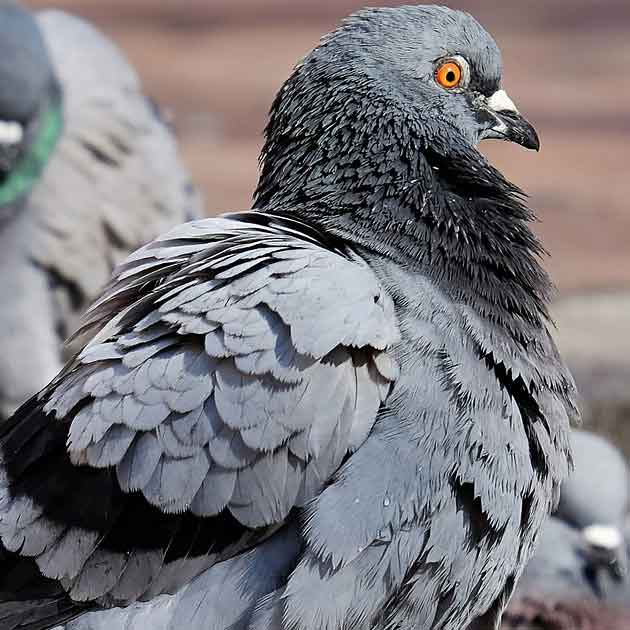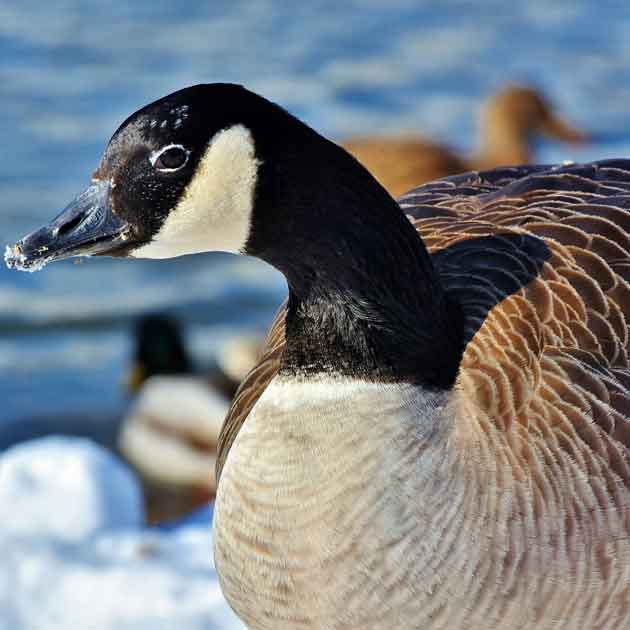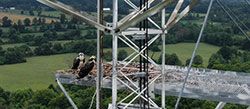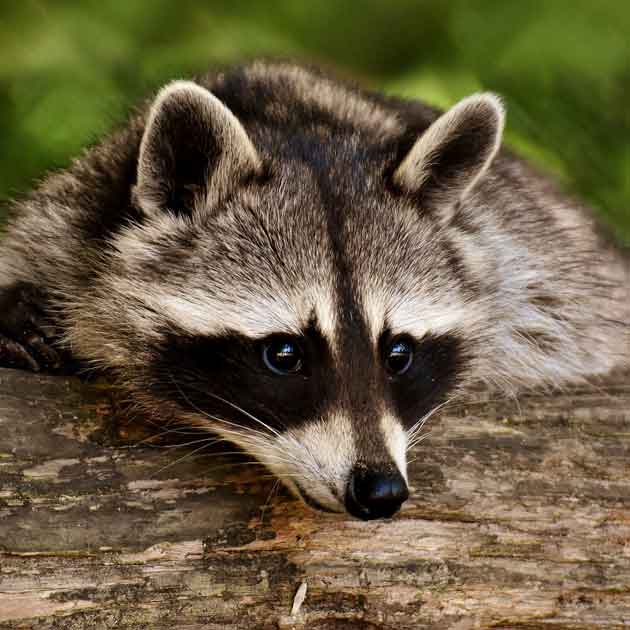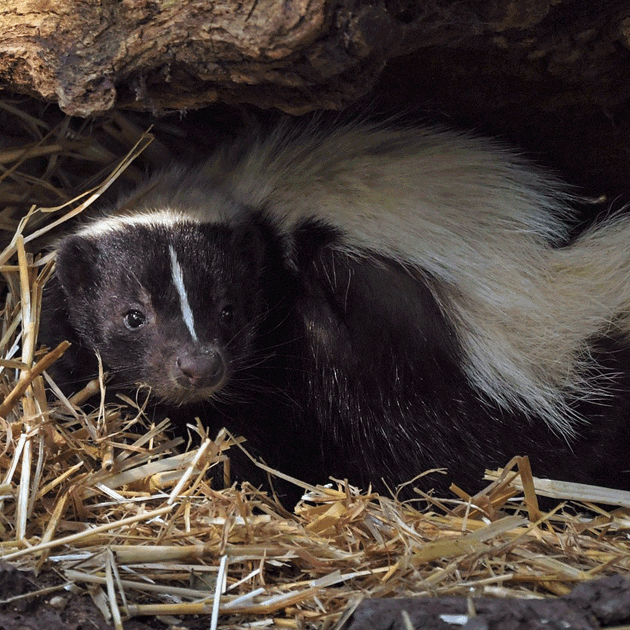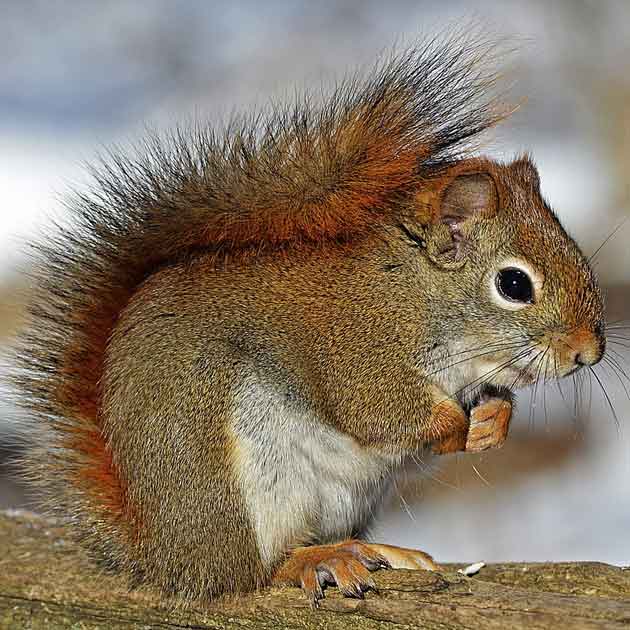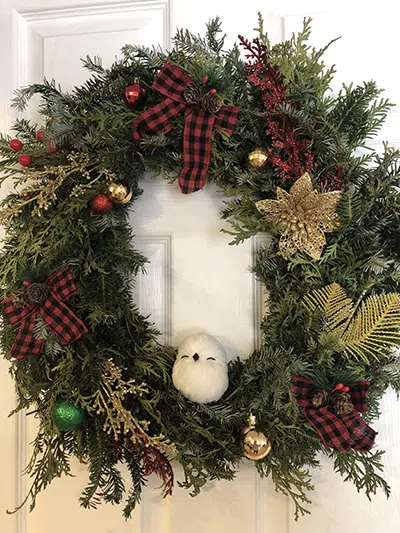Raccoons are mostly nocturnal, meaning they are most active at night. When they are not pilfering your trash bin or causing general mayhem, they often snooze and rest in their dens during the day. Those dens or nests are likely located in tree cavities, rock crevices, in or under brush piles, in underground burrows dug by other animals, and of course (and less ideally), in your attic or shed.

While raccoons are mostly solitary - aside from breeding season - a harsh winter may see more than one raccoon nesting in the same den. Let's have a closer look at where and how raccoons nest:
How Do Raccoons Make Their Nests or Dens?
Raccoons are highly intelligent and seem to have adopted a 'work smarter, not harder' attitude; not a whole lot of time is spent on 'building' a den. Instead, existing spaces are renovated or repurposed. As long as the space is protected from the elements, provides safety from predators, and is quiet enough for a good snooze, anything goes. Rock crevices or tree hollows are pretty much turn-key operations, or they might move into an abandoned den like a fox or groundhog burrow. And, if all else fails, there's always a shed, chimney, or attic one can claim. Once such space is procured, raccoons will perform some personalization and seasonal upgrades, like adding insulation to keep warm over the winter.
Natural Raccoon Dens
Tree Cavities and Hollows
One of the most common natural dens for raccoons are tree cavities or hollows. Raccoons are skilled tree climbers and can find a cozy spot in a hollowed-out trunk or a cavity high up in the branches. Offering protection from predators and the elements, this also makes for a perfect spot to raise a family. Hollows found under the roots of large fallen trees can make a suitable raccoon nesting place as well.
Rock Crevices and Caves
Raccoons may set up their den in rock crevices and caves. Again, these natural formations offer both shelter and safety. Raccoons are quite nimble and can squeeze into narrow openings and stay hidden from view and potential predators. Here in Ontario, that's mainly Great Horned Owls and Coyotes. In mountainous regions, raccoons may fall prey to cougars and other large wildcats as well.
Raccoons Nest in Other Animals' Burrows
Although raccoons have pretty impressive claws on their fore and hind paws, they aren't typically using them to dig their own burrows. Most digging is done for food.
Raccoons are smart and opportunistic animals but possibly a bit on the lazy side. Hence, it isn't uncommon to see a raccoon taking over an abandoned gopher burrow or a fox den no longer occupied. The main criteria are safety from predators, dark and quiet during the day, and close proximity to food and water.
Raccoons Nesting in Human Structures
Raccoon Dens in Attics
Being exceedingly adaptive and smart critters, raccoons are transitioning to urban areas all across the GTA. Attics can offer ideal denning sites for raccoons (and squirrels!) due to their warmth, shelter, and usually being a low traffic area. Access is made possible by exploiting holes in soffits or uncapped chimneys, or if more motivated, ripping up a roof shingle or two and creating an entry point. Once inside, raccoons may move insulation around, gather up what other materials may be found in the attic, and arrange it all into a perfect little nest.
Raccoon Nests in Chimneys
Like attics, chimneys also provide raccoons with a sheltered, quiet and dark spot to nest and rear their offspring. The brick and mortar structures maintain heat in the winter, while being cooler than outside temperatures in the summer.
Raccoon Dens under Porches and Decks
The cavities beneath raised porches and decks mimic the shelter and safety of rock outcroppings and hollow trees that raccoons seek out in the wild. Raccoons are such crafty critters and will take advantage of openings in lattice-work or damaged vents and skirting boards.
Raccoon Nest in Barns and Sheds
Barns, sheds and no longer in use buildings are prime raccoon real estate. Like attics and chimneys, barns, stables, and garden sheds also offer shelter, security, and a quiet place for a mid day nap or raise a litter of raccoon kits. Hay stacked in a hayloft, storage rafters, and unused farm equipment all provide an abundance of near perfect denning opportunities.
Raccoon Nest Characteristics
Raccoon dens can consist of one or more chambers - depending on the original architect or natural space. A nesting raccoon will line the den with both natural and man-made materials - whatever is available and is suitable to insulate or increase comfort. There will also be a latrine; raccoons are actually very clean animals and keep their bathroom activities confined to one area. This becomes especially problematic in attics. More on that later.
Preventing Raccoons from Entering Your Home
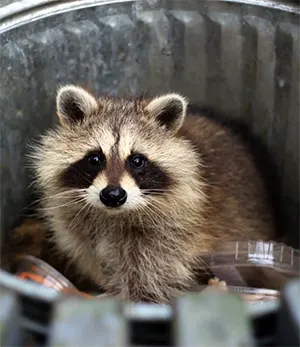 Aside from some nuisance activity (like strewn trash), raccoon nests or dens in your home cause a fair bit of damage and can lead to some seious health concerns. Your absolute best defense against raccoons coming into your home is a well maintained exterior and a little bit of habitat modification. What makes your home attractive is what we'll need to focus on:
Aside from some nuisance activity (like strewn trash), raccoon nests or dens in your home cause a fair bit of damage and can lead to some seious health concerns. Your absolute best defense against raccoons coming into your home is a well maintained exterior and a little bit of habitat modification. What makes your home attractive is what we'll need to focus on:
- Food
- Water
- Shelter
Eliminate Raccoon Food Sources
- Feed your pets indoors
- Store pet or other animal feed in locked and secure shed or indoors
- Properly seal and secure your garbage and compost bins
- Fence your vegetable garden
- Pick up fallen fruit and other edible debris
Eliminate Water Sources
- Again, your pet's water bowl should be inside
- Empty your bird bath at night
- Get rid of standing water, especially after a rainfall
Reduce Access to Shelter
- Install chimney caps
- Check your roof and siding for damage
- Seal any openings
- Seal and lock sheds or other outbuildings
- Remove unused machinery
Landscape Modification
- Trim tree branches to prevent roof access
- Trim shrubs, especially the lower part close to the ground
Raccoons are Nesting in Your Home?
But what if all of the above is too little, too late and you're already hosting a raccoon or five? Your absolute best bet is to call a qualified Wildlife Control and Removal Service like Hawkeye Bird & Animal Control. If removing raccoons from your home, it is of utmost importance that there are no babies left behind. Contact us today and get an assessment and plan to evict your raccoons. Hawkeye's Raccoon Removal Services are available all across the General Toronto Area. Also visit our Service pages for Toronto, Mississauga, and Brampton.
Related Articles: Raccoons - Everything you need to know, Help! There's a raccoon in my attic!, https://www.hawkeye.ca/blog/raccoon-nest-or-den-removal-in-the-gta


